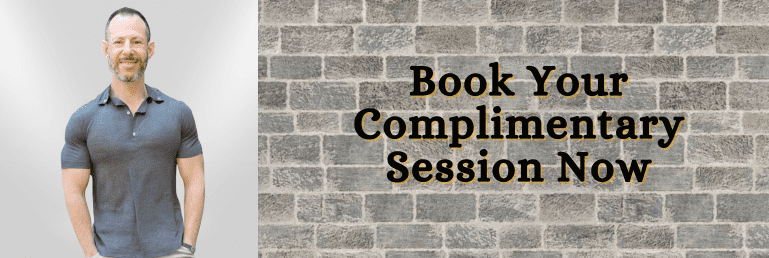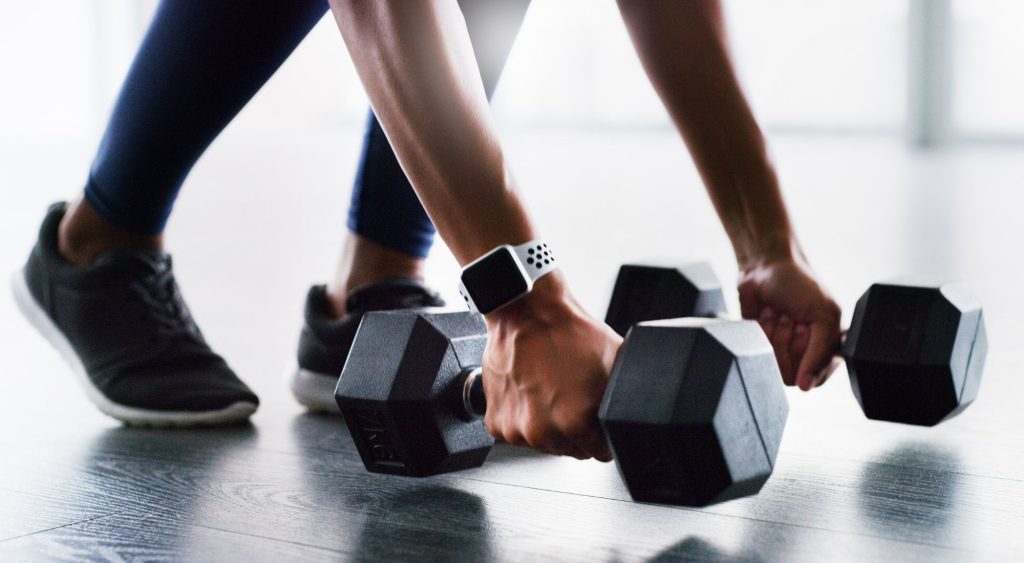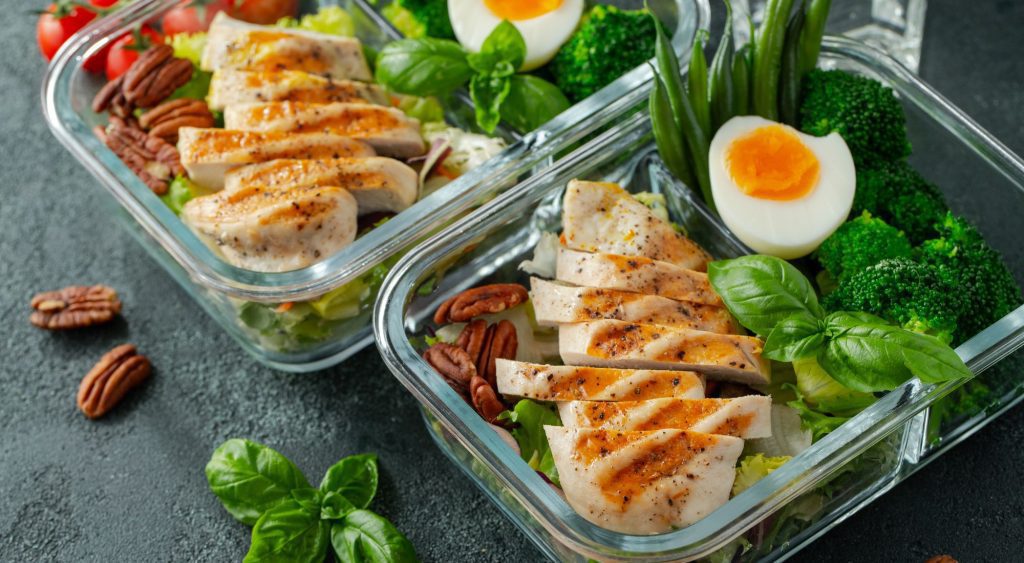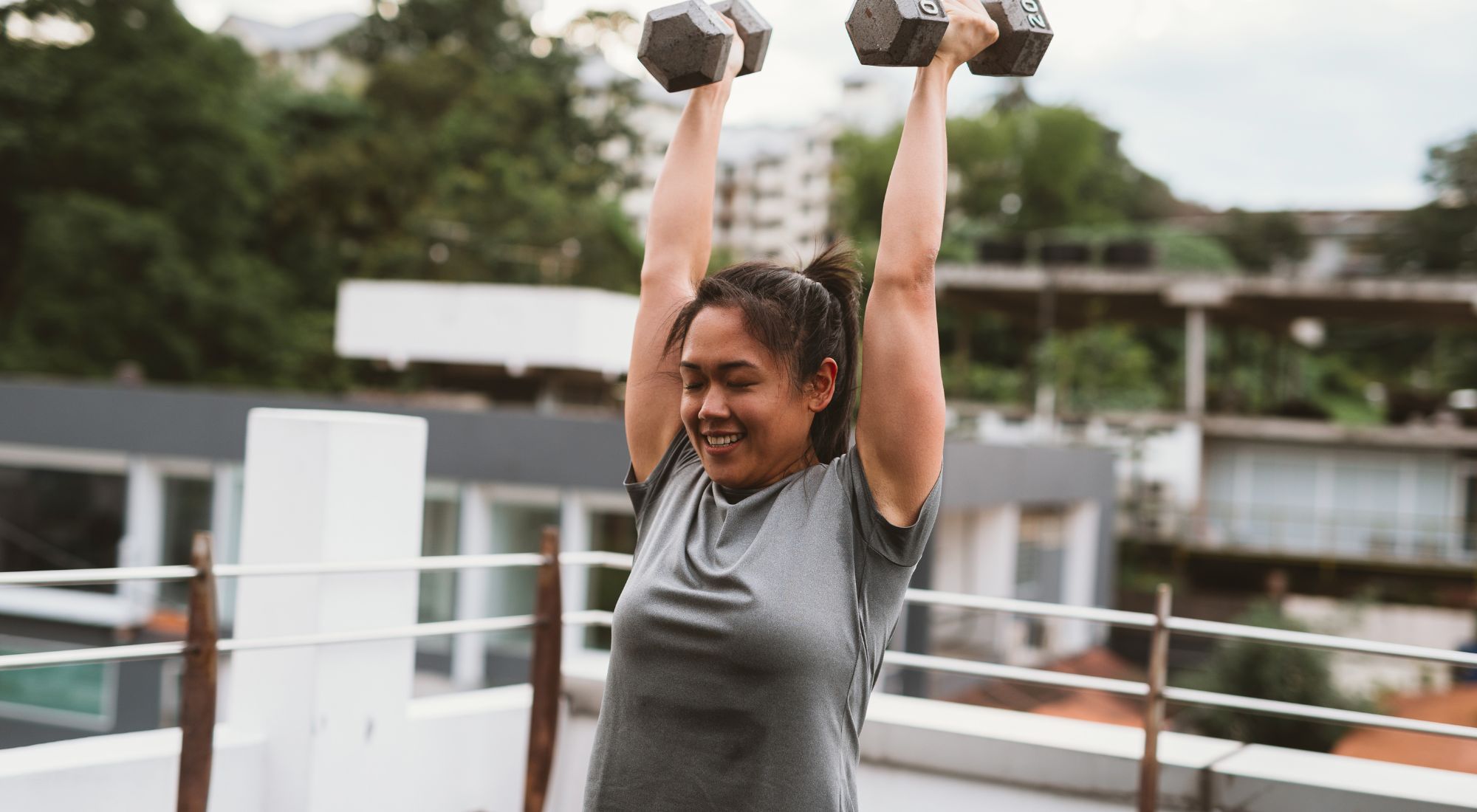The ketogenic diet is all the rage, but you’ve got mixed vibes about it.
You know people lose weight — you’ve read the stories and have seen the before and after photos.
But with the restricted amount of protein on the keto diet, you’re concerned about muscle loss and you want to know if it’s possible to build muscle on the keto diet.
The truth is, you’re right to be concerned about muscle loss on the ketogenic diet. Read on as we discuss more about this issue as well as what the keto diet is and how it works. We’ll also look at common reasons why people might experience muscle loss on keto and what you can do to combat it.
Want to prevent muscle loss?

Table of Contents
- Understanding the Keto Diet Is Important When Asking “Why Am I Losing Muscle on the Keto Diet?”
- 5 Reasons You May Be Losing Muscle on Keto
- How Do You Avoid Muscle Loss on Keto?
- Concerned About Muscle Loss With a Keto Diet? Gain Access to Customized Nutrition Plans, Training Routines, and Continuous Support From Anywhere With Keto Fitness Coaching

Understanding the Keto Diet Is Important When Asking “Why Am I Losing Muscle on the Keto Diet?”
To know how a keto diet affects muscle loss or gain, it’s necessary to know what the keto diet is and how it works.
The goal of the keto diet is to enter ketosis — the metabolic state that results when ketones are released as the body uses fat for energy.
Here’s how it works:
- The body needs fuel to function, and typically, our bodies are fueled by fat and the glucose we get from carbohydrates.
- When we eat, our body breaks down those carbs into simple sugars and uses glucose for fuel or stores it as glycogen. If there is a caloric surplus or no glucose storage available in the muscle, extra glucose will be stored as triglycerides (or body fat).
- When our bodies are low on glucose fuel, it turns into a secondary fuel called ketones, which are made in the liver from fat.
One of the most common uses of a ketogenic diet is weight loss. When the body is triggered by a lack of nutritional glucose, those ketone bodies from fatty acids created by the liver (including our fat storage) become an energy source.
This state typically also blunts hunger so long as processed foods (including ‘keto-friendly’ products) are not consumed.
The popularized keto diet involves reducing the amount of carbs and protein consumed while increasing fat intake. With this kind of diet, your body has less glucose to use as fuel and is forced to turn to fat converted to ketones for backup fuel.
The calories from a typical keto diet are:
- 70% from fat
- 20% from protein; and
- 10% from carbohydrates
Most people believe a keto diet is optimally effective only if it is strictly followed, which can be challenging. And it’s important to remember that reaching ketosis may take 7 to 30 days, or much longer depending on a person’s condition, so you will need patience and determination to wait and see how your body responds.
We believe a classic keto diet should be used for short-term intervention and not as a lifestyle diet. Because protein is strictly limited on a keto diet, muscle and bone loss can be real issues (even when strength training is involved).
Our keto fitness coaching approach is scientifically-based and individualized. No two people are alike, so we work with you to design a nutrition and exercise program with the ideal combination of diet and exercise to maximize health and muscle development.

Can Following a Keto Diet Cause Muscle Loss?
With any intervention diet targeting weight loss, there’s a chance of losing some muscle if the person is not getting adequate protein and is not incorporating strength training.
Because the keto diet limits protein intake, it may be associated with muscle loss.
The jury is still out on that, however.
Muscle loss and the keto diet are currently areas of research that are receiving mixed results. A 2018 study suggests that those on a keto diet for three months lost the same amount of body fat and had similar muscle changes as those on regular diets. However, some of those individuals on the keto diet experienced more muscle loss in their legs.
Bottom line: If protein is limited, there will be muscle loss.
Popularized versions of the Ketogenic diet typically lead to muscle loss and a myriad of other undesired results since they are not based on an individual’s body and, instead, meant to serve as a general guide.
The goal of Keto Fitness Coaching is to provide a personalized approach to the ketogenic lifestyle that ensures far more success than the ratios provided for mass use.
5 Reasons You May Be Losing Muscle on Keto
Ketogenic diets are not the only culprits leading to muscle loss. Changes in our aging bodies along with diet and training regimes can also contribute to changes in our body’s muscle mass.
#1: Sarcopenia: Aging-Induced Loss of Muscle Mass
Sarcopenia is a condition characterized by a natural and involuntary loss of muscle mass as we age.
According to a medical journal article by Jeremy Walston, muscle mass and strength may begin to decline as early as age 40 and continue to decline with age, resulting in a 50% muscle loss by age 80.
Another group of researchers also found that “5-13% of elderly people aged 60-70 years are affected by sarcopenia . . . increasing to 11-50% for those aged 80 or above.”
Even though the research may sound bleak for us as we get older, it is possible to combat and slow down the process with exercise and proper nutrition.
According to a Cochrane-published medical review, research trials showed resistance training improves muscle performance and strength.
Dietary changes can also improve muscular performance. One study points to the Mediterranean diet and eating more fruits and vegetables while other studies recommend supplements of …
- Selenium
- Magnesium; and
- Omega-3 fatty acids
… to increase muscle performance in aging adults.
#2: Not Eating Enough Protein
You will also lose muscle mass if you’re not consuming enough protein.
Our muscles are made up primarily of protein — muscles are 80% protein. When we aren’t getting enough protein, we are depriving our bodies of what we need to make hormones, build muscle, and repair muscle after a workout.
How much protein do you need?
It depends on factors like your:
- Age
- Lean Tissue Mass
- Sex
- Hormones
- Activity level; and
- Goals
The National Institutes of Health recommend getting 0.36 grams of protein per pound of body weight for an inactive person. If you’re active or do intense workouts, you’ll need much more (1 gram (or more) per pound of body weight).
At Keto Fitness Coaching, we’ll help create a personalized fitness and nutrition plan with the right amount of protein for your health based on your body composition, medical history, age, sex, and hormonal levels.

#3: Too High of a Calorie Deficit
On a restrictive keto diet, it’s possible to limit food intake so much that you don’t get the calories you need.
When you’re not getting the necessary fuel, you’ll not only lose fat, but you’ll also lose muscle for your body to get what it needs to survive — and that’s not good.
Studies show that 25% of the weight dieters lose is muscle, resulting in fatigue, loss of strength, and reduced stamina. Dieters can sometimes expect even more of these symptoms on the popularized ‘keto’ diet.
#4: Training Incorrectly
When it comes to training, most would agree that a mixture of cardio and strength training is ideal. But finding that balance can be difficult, especially when on a keto diet.
If your training is cardio-heavy or intense at the expense of strength training, you may experience muscle loss and decreased strength.
This can happen because cardio training relies on the same resources needed for building muscle. And when you use those resources up with cardio, you don’t have enough left for building muscle.
Does that mean you shouldn’t do cardio while on a keto diet?
By no means! It just means you need to choose cardio exercises that don’t deplete your muscle-building resources.
Remember these tips when aiming at effective training:
- Train with heavier loads and fewer reps.
- Train hard enough to challenge your body.
- Space out your workouts.
- Don’t overtrain and allow for proper recovery.
- Avoid training for strength and cardio on the same day.
- Use a variety of exercises.
- Prioritize your exercise based on your personal goals.
Need help figuring it all out and coming up with a plan?
At Keto Fitness Coaching, we offer personalized training plans with all of these tips in mind. With virtual appointments from your home or gym, you can access my coaching from anywhere in the world.
Check out our services and get your first session free.
#5: Not Training Enough
Balance is the key!
If you’re training too hard or incorrectly, you risk injury and fatigue. But if you don’t train hard enough or often enough, you’ll miss out on the muscle-building benefits of exercise.
Inactivity or low activity won’t cut it. The old saying “use it or lose it” runs very true when it comes to working out. The training that caused you to build muscle will be the same training that helps you keep the muscle.
Not only is regular training essential, but the proper load and intensity are also key to building and keeping muscle. As you work out, your muscles grow stronger, which means you’ll need to challenge those strengthened muscles even more to keep getting stronger.

How Do You Avoid Muscle Loss on Keto?
Muscle loss can be avoided on a keto diet by:
- Eating the right amount of protein
- Not eliminating carbs completely
- Getting enough calories
- Incorporating the right kind and amount of strength training into your exercise routine
#1: Consume Optimal Amounts of Protein for Your Body
Protein is essential for building muscle. Skimping on protein intake can have unwanted and unhealthy results.
While experts suggest that an active person should get between 0.7 to 0.9 grams of protein per pound of body weight to build muscle, literature has proposed that people can stay in ketosis while consuming around 1 gram of protein per pound of body weight.
Because protein doesn’t have a huge effect on your blood sugar, you can eat more protein and still stay in ketosis — especially if you are incorporating regular strength training in your fitness routine.
#2: Prioritize Strength Training In Your Workouts
Muscle building doesn’t happen when we’re sedentary. Exercise is necessary to build muscle — specifically strength training and resistance training.
Resistance training to build muscles can involve:
- Weightlifting
- Squats
- Pullups
- Bench presses
- Pushups
- Resistance band exercises
How often should you engage in strength/resistance training? According to a group of 10 studies, training at least twice a week delivered better results than once a week.
If you’re not sure how much weight to lift, which exercises to do, or how often to do them, Keto Fitness Coaching is for you. We’ll develop a plan based on your needs and goals while keeping your safety and abilities in mind.

#3: Don’t Cut Carbs Completely — Instead, Choose Healthy Carbohydrates in Moderation
Carbs get a bad rap sometimes.
Though they can contribute to raised blood sugar and weight gain, not all carbs are created equal.
You’ll still need carbs on a keto diet, but be sure to choose healthy carbs over things like pasta and bread.
Aim to get about 50 grams of carbs a day from foods like:
- Low carb vegetables
- Broccoli
- Cauliflower
- Green beans
- Zucchini
- Bell peppers
- Spinach
- Berries
- Blackberries
- Blueberries
- Raspberries
- Strawberries
- Nuts and seeds
- Almonds
- Cashews
- Brazil nuts
- Pecans
- Walnuts
- Chia seeds
- Flaxseeds
- Pumpkin seeds
- Sesame seeds
- Unsweetened coffee and tea
- Cocoa and dark chocolate
Depending on your weight loss goals, foods like nuts and seeds as well as chocolate may not be included in your diet plan, as they may inhibit weight loss progress.
In addition to choosing the right carbs, you might also consider timing your carb consumption around your workouts to enhance your performance.

Concerned About Muscle Loss With a Keto Diet? Gain Access to Customized Nutrition Plans, Training Routines, and Continuous Support From Anywhere With Keto Fitness Coaching
If you’re weary of dieting and exercising on your own, we can help.
Keto Fitness Coaching is more than just keto diet planning. We’ll work together to develop a plan designed to:
- Teach you how to be healthy for life
- Get a strong, lean body
- Kill the inflammation in your body
Our coaching is designed to meet you where you are, whether you are beginning a new health and fitness routine or want to drive your current routine up a notch.
We offer three options for coaching:
- One-time consultation with a certified keto nutritionist
- Continuous coaching with a certified keto coach
- Custom macronutrients (macros) calculation
Our online sessions are available anywhere in the world as long as you have internet access.
Contact us today and get started with your first session free.
The content in this blog should not be used in place of direct medical advice/treatment and is solely for informational purposes.


